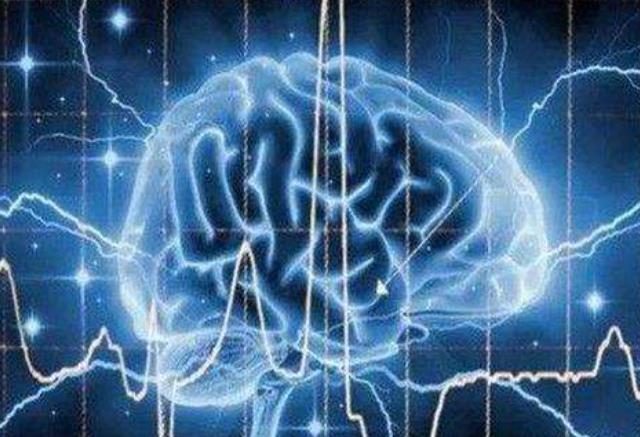|
本文是心理学专业的Essay范例,题目是“The Process and Characteristics of Research(研究过程与特点)”,研究是通过有计划的、系统的数据收集、分析和解释,得出问题解决方案的过程(Crano, Brewer, & Lac, 2014)。基于科学的研究方法是当;发现问题,收集相关数据,从数据中形成假设,并对假设进行检验(Coolican, 2014, p. 10;狼,1996)。要进一步扩展这个定义,需要执行如图1所示的研究过程中的几个步骤。 Research is the process of arriving at a solution to a problem through the planned and systematic collection, analysis and interpretation of data (Crano, Brewer, & Lac, 2014). Research based on the scientific method is when; a problem is identified, relevant data is collected, a hypothesis is formed from the data, and the hypothesis is tested (Coolican, 2014, p. 10; Wolfs, 1996). To further expand on this definition are several steps to the research process as shown in Figure 1.
The article (Figure 2) clearly states that the forecast was part of the Vital Signs 2016 report (Momentum Waikato Community Foundation, 2016). Even though there is little stated in the article in regards to the research process, this has been implied by stating that the information came from the Vital Signs report and that information was gathered through public input/feedback and statistics. The Vital Signs report (Momentum Waikato Community Foundation, 2016) demonstrates the research process as outlined in Figure 1. The idea or reason for the report according to the article was to define priorities for the Waikato regions. The research design was of a mixed method. The quantitative data was gathered from secondary data sources such as; Statistics New Zealand and the NZ Health Survey, with the qualitative methods being obtained through public events and iwi and youth engagement sessions. The subject population being Hamilton city and the Waikato and Matamata-Piako regions, with over 400 residents of the regions, as well as iwi and youth being involved. 《生命体征报告》(Momentum Waikato社区基金会,2016年)展示了如图1所示的研究过程。根据这篇文章,报告的想法或理由是确定怀卡托地区的优先事项。研究设计采用混合方法。定量数据来自二手数据来源,如:新西兰统计局和新西兰健康调查,定性方法是通过公共活动、iwi和青年参与会议获得的。研究对象是汉密尔顿市、怀卡托和马塔玛塔-皮亚科地区,有400多名居民以及iwi和青年参与。 The qualitative information was gathered from four public events and engagement sessions, which focused on finding what the priorities, views and feedback were from the regions participants. Other data concerning the quantitative measures was obtained from; census data 2006/13/15, Statistics New Zealand; 2013/14 Active New Zealand Survey, Sport New Zealand; 2011-14, NZ Health Survey; 2015 Workforce Survey and The Royal New Zealand College of General Practitioners. All the data was collated and analysed by the National Institute of Demographic and Economic Analysis (NIDEA) for the purposes of the Vital Signs 2016 report. The results of this report were reported in the article. Credibility of the Forecast预测的可信度 To determine the credibility of the forecast, the forecaster and the research referenced, one needs to further investigate the authority; relying on what those in positions of authority say, accuracy; whether the source is accurate, objectivity; whether the source shows bias and, currency; whether the source is up to date. 为了确定预测的可信度,预测者和引用的研究,需要进一步调查权威;依赖于那些权威人士所说的,准确;来源是否准确、客观;来源是否有偏倚、时效性;来源是否最新。 The article directly states the source of the information as being the Vital Signs Report (Momentum Waikato Community Foundation, 2016). This offers two sources to look at determining the credibility of the research. It is important to show the research design with the results, so that the credibility of the study can be determined (Neuman, 2009). The Vital Signs methodology, created in 2001, has more than 75 communities around the world using Vital Signs. The Waikato Vital Signs is led by Momentum Waikato Community Foundation in partnership with six major Waikato philanthropic trusts: NAR Foundation; Trust Waikato; WEL Energy Trust; Waikato-Tainui; D.V. Bryant Trust and Ngati Haua Iwi Trust, along with the National Institute of Demographic and Economic Analysis (NIDEA), University of Waikato. The data quoted in the article were sourced from the Vital Signs 2016 report to provide an insight between statistical information and what matters most to people living in the Waikato and Matamata-Piako regions. This was achieved with the support of the Vital Signs Reports’ philanthropic partners; D.V. Bryant Trust, Momentum Waikato Community Foundation, NAR Foundation, Ngati Haua Iwi Trust, Trust Waikato, Waikato Tainui and WEL Trust. 文章中引用的数据来自《2016年生命体征报告》,旨在揭示统计信息和生活在怀卡托和马塔玛塔-皮亚科地区的人们最关心的问题之间的关系。这是在《生命体征报告》慈善合作伙伴的支持下实现的;D.V. Bryant Trust、Momentum Waikato社区基金会、NAR Foundation、nati Haua Iwi Trust、Trust Waikato、Waikato Tainui和WEL Trust。 “Validity is one of the strengths of qualitative research and is based on determining whether the findings are accurate from the standpoint of the researcher, the participant, or the readers of an account” (Creswell & Miller, 2000). NIDEA collated and analysed existing qualitative data from the secondary data source as mentioned previously. The quantitative data within the report was formed from a variety of public events and engagement sessions involving Waikato residents, local iwi and youth to help form an overall view of the regions priorities and visions. By looking at the Vital Signs concept, the philanthropic partners, the involvement of NIDEA for collating and analysing data, the quantitative data sourced and the method in which the qualitative data was collected, the report appears to hold a strong sense of credibility. 通过研究生命体征的概念、慈善合作伙伴、NIDEA对数据的整理和分析、定量数据的来源和定性数据的收集方法,该报告似乎具有很强的可信度。 Other Ways of Knowing Other ways of knowing can include such things such as; intuition; based on preconscious ideas, authority; based on what authorities say, rationalism; based on reasoning and empiricism; based on experience (Christensen, Johnson, & Turner, 2013). The articles (Figure 3) headline; ‘Safety advocate predicts more deaths if speed limit raised’, is further supported by views within the article that increasing the speed limit could “…lead to more deaths and injuries” (Brake, 2017, as cited in Radio New Zealand, 2016). With such campaigns as ‘speed kills’ being part of everyday life since the 70’s, it is deduced that these prior beliefs and assumptions may allow us to accept this reasoning; that speed does in fact cause deaths. This reasoning is a form of syllogism; when a conclusion is made from two premises (Singh, 2007, p. 20). In this case the first premise is speeding while driving, the second premise is that if that person crashes and causes a death that the conclusion is made that ‘speed kills’. The Automobile Association (AA) states that they agree that some limits are too high and need to be lowered. The AA in this article is clearly being used as an authority figure; that is an individual/organisation who is viewed as being respected and knowledgeable in their field, whether this is supported or not (Bordens & Abbott, 2014). Credibility of the Forecast预测的可信度 To determine credibility of the forecast and/or forecaster it is important to look at their expertise, their credentials, whether there is bias and whether the predictions they make are verifiable and accurate (Bordens & Abbott, 2014). The forecaster in the article is the road safety charity, Brake (Brake, the road safety charity, 2017). According to their website; “Brake is a national road safety charity that works to prevent road deaths and injuries and support people bereaved and injured in crashes across New Zealand” (2017). From this we can see that there is bias when it comes to the credibility of their predictions, with their charity clearly supporting the emotional viewpoint of victims. To be credible, the source must be objective, as defined by Christensen, Johnson, & Turner (2013, p. 37); objectivity is the “goal in science to eliminate or minimise opinion or bias in the conduct of research”. 要确定预测者和/或预测者的可信度,重要的是要看他们的专业知识,他们的资历,是否存在偏见,以及他们所做的预测是否可验证和准确(Bordens & Abbott, 2014)。文章中的预测者是道路安全慈善机构,Brake (Brake, The road safety charity, 2017)。根据他们的网站;“Brake是一个国家道路安全慈善机构,致力于防止道路死亡和伤害,并支持在新西兰各地车祸中失去亲人和受伤的人”(2017年)。从这一点我们可以看出,当涉及到他们的预测的可信度时,存在偏见,他们的慈善机构明确支持受害者的情感观点。根据Christensen, Johnson, & Turner(2013,第37页)的定义,信息来源必须是客观的,才能可信;客观性是“科学的目标是消除或最小化研究行为中的意见或偏见”。 The other authority that the article has relied on is the AA, whom have provided funding for research pertaining to road safety through the AA Research Foundation (The New Zealand Automobile Association, 2017), but as shown from their past and ongoing research on their website, speed and road deaths are not one of the one of the fields they have researched. As such, their opinions are non-verifiable.
The overall credibility of the predictions made is clearly not substantiated by any verifiable data, and the opinions made by Brake do not add to the credibility due to their lack of objectivity. The AA does hold a degree of authority, as they have been involved in research pertaining to road safety, but their viewpoints in this article are not backed by any substantiated data or research. 预测的总体可信度显然没有得到任何可证实的数据的证实,而Brake的观点由于缺乏客观性而没有增加可信度。AA确实有一定的权威,因为他们参与了有关道路安全的研究,但他们在这篇文章中的观点没有任何确凿的数据或研究支持。 Research using the scientific method provides a way of understanding and predicting phenomena using a logical process that is rational and objective. It is based on empirical evidence and verification. When making the predictions within the article (Figure 2), quantitative data was used and in this case it was secondary data from government statistics, health system metric, etc. This data/ evidence used to verify the statements being made, clearly coming from verifiable sources. The other evidence/data within the article was of a qualitative nature; gathered from public events and engagement sessions to further expand on the knowledge acquired from the quantitative data and provide insight into the region. Qualitative data can complement and refine quantitative data, but can be difficult to analyse as the findings usually cannot be generalised or easily categorised. 文章中的其他证据/数据是定性的;从公共活动和参与会议中收集,进一步扩展从定量数据中获得的知识,并提供对该地区的深入了解。定性数据可以补充和完善定量数据,但很难分析,因为研究结果通常无法概括或容易归类。 The scientific method is incapable of judgement. It cannot say that a phenomena is good or bad, it can study the causes and effects of a phenomena and can report on those results. Other ways of knowing we can include; language, reason, sense perception, memory, faith, intuition, imagination and emotion. The predictions within the article (Figure 3) were made from perceived authority figures and although using authority figures can provide strength to back up ones claims, there must be awareness that the source may not be truly authoritative. As one example using the AA as an authorities source; even though they had done research on road safety, they have not specifically researched speed as a factor for road deaths, which questions the validity of their statements. 我们还可以通过其他方式了解;语言、理性、感觉、感知、记忆、信念、直觉、想象和情感。文章中的预测(图3)是根据权威数字做出的,尽管使用权威数字可以提供支持自己的主张的力量,但必须意识到来源可能不是真正的权威。举个例子,使用AA作为权威来源;尽管他们做过道路安全方面的研究,但他们并没有专门研究速度作为道路死亡的一个因素,这就质疑了他们的说法的有效性。 The other way of knowing used within the article was deduced from previous beliefs and assumptions that ‘speed kills’. This is a well-known phrase to all of us; it is what can be perceived as learned knowledge. In the article this is used to reiterate the predictions that increasing the speed limit could “lead to more deaths and injuries” (Brake, 2017, as cited in Radio New Zealand, 2016). The reasoning behind their forecast is that it is because of speed that road deaths do and will occur, yet they fail to take into other factors such as road conditions, fatigue, etc., without empirical evidence to support such predictions. 文章中使用的另一种认知方法是从之前的信念和假设中推导出来的,即“速度会杀死人”。这句话我们大家都很熟悉;这是可以被理解为学到的知识。在这篇文章中,这是用来重申提高限速可能会“导致更多的死亡和伤害”的预测(Brake, 2017,引用新西兰广播电台,2016)。他们的预测背后的原因是,道路死亡的发生和将会是由于速度,但他们没有考虑到其他因素,如路况、疲劳等,没有经验证据来支持这些预测。 Using other ways of knowing to put forth predictions, is not based on empirical evidence, but this does not mean that it is not without its merits. The ideas that are put forth can help; form a relationship between variables, learn more about the phenomenon and, initiate further research. In short these other ways of knowing are the ideas on which to build a hypothesis as stated by Bordens and Abbott (2014), “… these ideas must then be subjected to rigorous scientific scrutiny rather than being accepted at face value” (p. 23). 使用其他的认知方法来提出预测,并不是基于经验证据,但这并不意味着它没有优点。提出的想法会有所帮助;形成变量之间的关系,了解更多的现象,并启动进一步的研究。简而言之,正如Bordens和Abbott(2014)所述,这些认知的其他方式是建立假说的思想基础,“â€μ这些思想必须经过严格的科学审查,而不是被表面价值所接受”(第23页)。 留学生论文相关专业范文素材资料,尽在本网,可以随时查阅参考。本站也提供多国留学生课程作业写作指导服务,如有需要可咨询本平台。 |
 |
|||
| 网站地图 |



